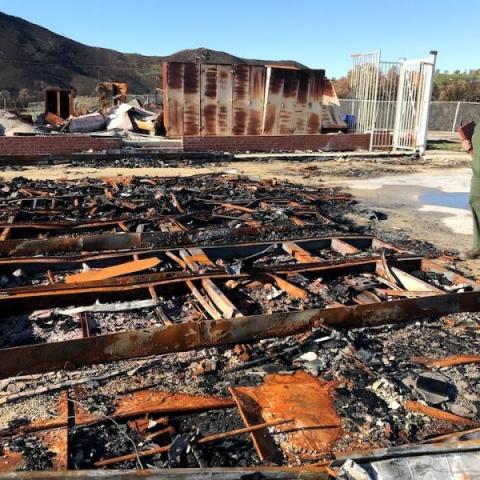
Since 2002, 17 mountain lions have been killed by traffic collisions in and around Santa Monica Mountains NRA/NPS
A young female mountain lion was recently struck and killed by a vehicle on State Route 118 to the north of Santa Monica Mountains National Recreation Area in California, marking the third time a mountain lion was hit by a vehicle on the same stretch of freeway since December, according to the National Park Service.
The carcass was collected by the California Department of Fish and Wildlife one mile east of the Rocky Peak exit on the evening of January 14 and was soon after identified by National Park Service researchers as P-51, an eight-month-old kitten. CDFW will perform a necropsy.
The lion’s mother, P-39, was struck and killed on the same freeway Dec. 3, as was her sibling, P-52, on December 20.
The CDFW Wildlife Investigations Lab conducted a necropsy on the sibling, P-52, to determine his overall health, especially because he had been without his mother for a few weeks prior to being struck by a vehicle. At seven months, mountain lions can cover a significant amount of area, but it is unclear to what extent they can survive on their own. The necropsy revealed that P-52 was thin, weighing 24 pounds, but still had adequate internal fat reserves. Additionally, he had fed recently on a skunk - a typical prey item for a kitten learning to hunt.
“It was positive to see that P-52 had recently fed,” said Marc Kenyon, CDFW’s Mountain Lion Conservation Program coordinator. “Whether or not these kittens had the ability to feed was a subject of much discussion. Apparently, their mother had taught them predatory skills within their first six to seven months, and we’re hopeful the necropsy on P-51 confirms this, too.”
This was the 17th known case of a mountain lion killed on a freeway or road in the NPS study area in and around the Santa Monica Mountains since 2002.
“Unfortunately this case illustrates the challenges for mountain lions in the region, where roads are both major barriers to movement and potential sources of mortality,” said Dr. Seth Riley, wildlife ecologist for Santa Monica Mountains National Recreation Area. “The area where these animals were killed is part of a critical wildlife corridor that connects the genetically isolated population in the Santa Monica Mountains to what is considered the nearest source population, in Los Padres National Forest.”
Despite the fact that more deaths have occurred on this stretch of State Route 118, the section of U.S. Highway 101 on the northern edge of the Santa Monica Mountains is considered more of a long-term threat to the viability of mountain lions in the region. NPS researchers have documented multiple mountain lions crossing State Route 118 numerous times, indicating it is less of a barrier than U.S. Highway 101. That same permeability has led to many more attempted crossings on State Route 118 than U.S. Highway 101, resulting in a greater number of deaths.
A hiker/equestrian tunnel that has occasionally been used as an undercrossing is located near where the deaths occurred, but the area lacks adequate wildlife fencing to direct animals to the tunnel.
“Caltrans is aware of the need to protect the biological diversity of the region. To that end, we are working with our partners to study the feasibility for wildlife passage and protection,” said Carrie Bowen, Caltrans District 7 Director.
Southern California’s extensive road network has been shown to be a major barrier for wildlife and has particularly hemmed in the mountain lion population in the Santa Monica Mountains. A proposed wildlife crossing on U.S. Highway 101 in Agoura Hills would provide a connection between the genetically isolated population in the Santa Monica Mountains and the robust populations to the north.
The National Park Service has been studying mountain lions in and around the Santa Monica Mountains since 2002 to determine how they survive in an increasingly fragmented and urbanized environment.


 Support Essential Coverage of Essential Places
Support Essential Coverage of Essential Places







Add comment